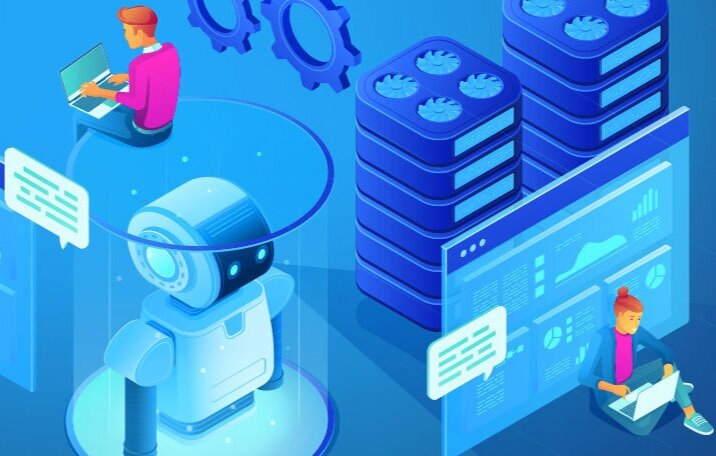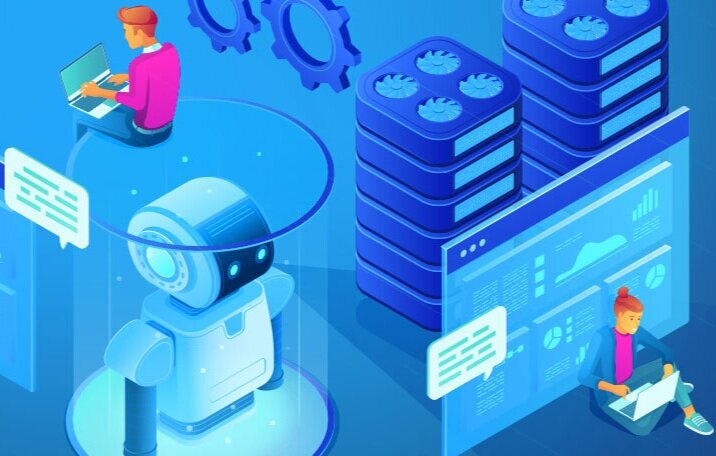Overview of RPA in 2019: Top 10 Most Read Robotic Process Automation Articles
Original post from https://www.cigen.com.au/cigenblog/

Throughout the last couple of years, a growing number of global companies have embarked on their automation journey, convinced by the impact of RPA implementation on the overall productivity, efficiency, and human (i.e., customers and employees) satisfaction.
According to Gartner, the digital business demands led to the growth of the RPA software revenue to $846 million in 2018 and went on to reach $1.3 billion in 2019. These numbers justify the claim that RPA in 2019 was the fastest-growing segment of the global enterprise software market.
“The digital business demands led to the growth of the RPA software revenue to $846 million in 2018 and went on to reach $1.3 billion in 2019.A”
CLICK TO TWEET
Digital transformation has slowly but surely become ‘the way to go’, as it is adopted by many businesses faced with profound technology, market, and workforce changes.
At CiGen, we constantly strive to provide you with the latest information about advances in the field of intelligent automation. On our blog, we shared with you our pragmatic approach to technologically-supported business. As a form of recap, we present you below a list of our most read robotic process automation articles in 2019. They are meant to become your knowledge resources, a key element of successful RPA implementation.
1. 6 Real World Use Cases for Robotic Process Automation (RPA) in Healthcare
This article is part of a series focused on the impact of robotic process automation in different industries, evaluated in terms of use cases. The healthcare industry abounds in simple, rule-based, high volume and high-frequency processes whose manual performance is not very efficient.
Consider, for instance, processes such as patient registration and scheduling, patient data management, claims processing, audit preparation, etc., which could be greatly optimised if completed faster and more accurately by software robots. The need for adequate care for a world population that is growing older turns RPA in healthcare into something more than a mere alternative.
2. 8 Real World Use Cases for Robotic Process Automation in Finance
This one is the first of the same pragmatically oriented series of articles devoted to RPA use cases. In fact, when it comes to finance, mulling over robotic process automation use cases was our recommended strategy for keeping your feet on the ground and not falling for the automation hype.
The article was meant to give you an idea about the financial industry processes which are best suited for automation, and a rationale for why this is the case. Consequently, you should be better able to devise concrete plans for attaining your business goals.
The use cases devise a successful trajectory of actions, from the present to the time when your objectives will be presumably achieved with the help of software robots.
3. 8 Questions to Ask about Processes before Implementing Robotic Process Automation
Given its potential to assist an organisation to improve and/or remain competitive across the current dynamic business environment, RPA has become necessary for striving businesses of all sizes.
According to CiGen’s CEO Leigh Pullen, beginning RPA implementation with the business processes that are best suited for automation is crucial for tapping into the vast potential of robotics. In order to identify those ‘best suited’ automation opportunities, you should start from a very concrete problem and have a clear objective to be attained.
A thorough understanding of the business processes in order to be able to streamline them is the very next step. Questions about the type of data that the process works with (structured or unstructured), its maturity and stability, or its capacity to provide measurable savings are among the eight that we suggested.
*
Thank you! An expert will get in touch soon.
4. 10 RPA Application Areas that You Can Implement in Your Company
This article is concerned with the functional nuts and bolts of robotic process automation; it is an attempt to address in concrete terms the question of what you can actually do assisted by software robots. As such, it provides an overview of RPA use cases with trans-industry applicability.
This is like a description of RPA benefits, substantiated by the processes that can be completed more efficiently by software robots. Data extraction and management, payroll management, reports generation, or customer service operations are among the processes that all businesses must deal with, irrespective of the specific industry sector.
5. 8 Real World Use Cases for Robotic Process Automation (RPA) in HR
The primary rationale for leveraging RPA for human relations is that these departments are likely to be the first ones affected by the sharp decrease in labour force. The list of eight real world use cases for RPA in HR shows how automation can be used to ease the burden on the shoulders of HR employees.
Recruitment, onboarding and offboarding, or attendance tracking are among the HR-specific processes that can be streamlined by the use of bots.
6. 8 Real World Use Cases for Robotic Process Automation (RPA) in Telecom
Highly eligible processes for automation, i.e., high frequency, rules-based, repetitive processes, constitute the basis of telecom. The need to cope with variable service demands makes telecommunications a sector that can greatly benefit from a scalable workforce.
Quasi abolished error rates, better data quality, improved customer service, or increased operational efficiency are even more reasons to leverage bots to prepare and disseminate periodic reports, respond to partner queries, track competitors’ prices, etc.
7. 10 Real World Use Cases for Robotic Process Automation (RPA) in Retail
In case you wonder whether software robots can add anything to the helping hand of your physical robot colleagues in stores, the ten processes listed as RPA use cases in retail endorse an affirmative answer.
Bots support an improved organisation of business processes, which is necessary to handle industry-specific challenges, like a rather slow market growth, unreliable supplies, or rising production and labour costs.
Automation of payment platforms, payroll management systems, sales analytics, marketing planning, etc. encourage productivity and improve customer experience, thereby contributing to optimally address the challenges.
8. 5 Ways to Measure the ROI of Your Robotic Process Automation Deployment
This article provides recommendations for assessing the concrete operation cost reductions. Starting your automation journey with precisely defined expectations, and accurate estimations of process speed, output quality, or compliance improvement – to name but a few – are ways that allow for insightful evaluations of the ROI of your RPA deployment.
We also propose that your evaluations go beyond the financial impact, and include qualitative metrics, e.g., employees’ job satisfaction, which requires more intricate scrutiny.
9. 5 Real World Use Cases of Robotic Process Automation (RPA) in the Public Sector
Digital transformation is likely to save government working hours, cut down costs, improve productivity, support more effective management decision-making by means of data improvement, and temper citizens’ dissatisfaction by better addressing their oscillating demands.
Additionally, implementation is low cost, fast, and significantly less risky than other kinds of digital transformations. The article emphasizes the impact of RPA on the Australian public sector, expected to make Shared Service initiatives become simply redundant.
10. 5 Real World Use Cases of Robotic Process Automation (RPA) in Hospitality
RPA deployment in the hotel and travel sector may contribute to solving industry-specific issues like the growing number of demanding and tech-savvy travelers, expected to claim additional amenities, bespoke services, or elevated customer service. RPA results in operational improvement that revolutionises guest experiences.
Moreover, RPA scalability seems to be a good solution for seasonal variation, which can cause undesirable fluctuations in the revenue flow of hospitality businesses. Consequently, it would be wise to consider automation of processes such as booking, loyalty processing, and more.
Conclusion
We hope that our list of most read RPA articles in 2019 brought you one step closer to the automation first era. Our mission is to help you make the right choices regarding the deployment of digital technology towards achieving your business objectives in 2020.
If you want a practical list of steps for implementing RPA across 11 industries (some of which, but not limited to, mentioned above) you can download our 30+ page eBook for free today.
Leave a Comment
You must be logged in to post a comment.








